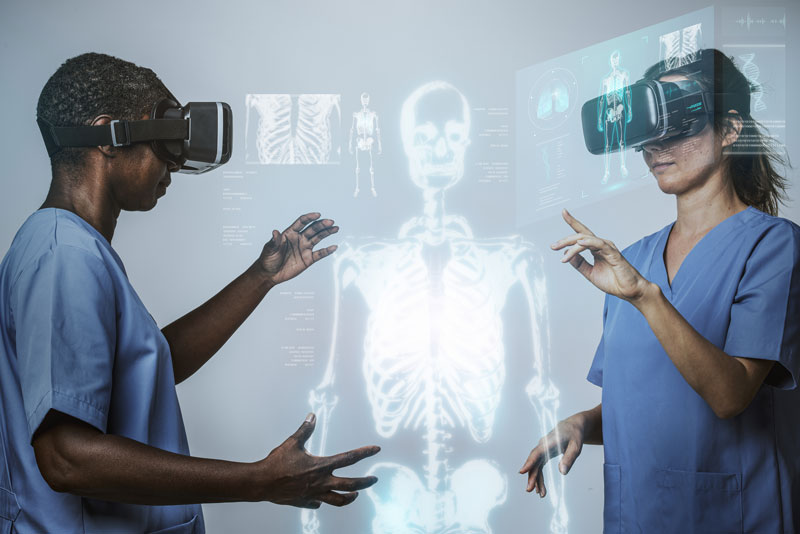
by Beth Dolinar, Contributing Writer
A lot of years ago I spent five nights in the hospital after cancer surgery. By that time, I’d had a mild case of asthma that meant I always kept a rescue inhaler within arm’s reach—a safeguard more for my mental well-being than for any real breathing emergency, which was rare.
On my second night, I reached for my water cup and knocked my inhaler off the side table, sending it scooting way across the floor. Although I didn’t need the inhaler, the thought of it being out of reach brought a bit of panic. Unable to move—the result of an incision and all those tubes—-I reached for the call button.
Nobody came. It was 3 a.m. and the hallway outside my room was silent. Likely, the nurses were helping other patients, or maybe they were on a much-needed break, or maybe they were short-staffed that night, but as the minutes passed I worried.
I reached for my cell phone (carefully so not to drop it) and dialed home. Could someone please call the main hospital number to ask if someone could come and fetch my inhaler?
This was pre-pandemic and those dark years when COVID pushed hospital staff to the point of breaking. The resulting burnout led to the attrition already in full swing as the baby boomers reached retirement age. Now, it’s argued that many hospitals are facing a shortage of nurses.
It’s a potential crisis for patients, a topic that I will explore in a digital documentary for WQED, the PBS station in Pittsburgh. Our first day of filming took us to Indiana University of Pennsylvania, a state college that is working to boost the nursing ranks by improving access to nursing programs and degrees.
When we arrived, a dozen students were scattered around the classroom wearing tech-y headsets and holding what looked like cup holders. They were using virtual reality to learn how to assess an ER patient. The students craned their necks up and down as they went through the lesson. On the far wall was a big screen, so I could see what the students were seeing.
The patient was “George” a 20-something man who had been dizzy and nauseous for a few weeks. Although he appears on screen as a computer-generated image, his voice sounded human, the work of an actor who played the part. The virtual realty put us in the room as the nurse took vitals and asked questions.
It’s a new approach to teaching that uses virtual reality to, among other things, improve access to those who seek a nursing degree. Attrition has not just cut into hospital staffing—it’s also depleted the ranks of nursing instructors. Schools also are facing a lack of classroom space, and VR requires little of it.
Which brought me to my questions. Are we approaching a time when artificial intelligence will replace human beings in medical settings? Will our next stay in the hospital have a robot tending to us after surgery? The instructors at IUP weren’t so sure, but they see the value of AI in healthcare—although not for bedside care any time soon.
It was interesting to watch this leading edge of where healthcare is headed. It was good to see that, even in the computer-made emergency room, the spirit of empathy and humane treatment was evident. The student nurses spoke to George with warmth and kindness. They were thorough in their assessment.
Turns out George was suffering from bulimia. The nurses—and later the doctor—- arrived at the diagnosis after learning that George had been under a great deal of stress. By the end of the assessment, the doctor was putting a treatment plan together. Although George was not a real person, the students tending to him were real, and were learning how to help all the human Georges they will care for some day.
As a former and probably future patient, it was reassuring.
***
 About the author: Beth Dolinar is a writer, Emmy-award winning producer, and public speaker. She writes a popular column for the Washington “Observer-Reporter.” She is a contributing producer of documentary length programming for WQED-TV on a wide range of topics. Beth has a son and a daughter. She is an avid yoga devotee, cyclist and reader. Beth says she types like lightning but reads slowly — because she likes a really good sentence.
About the author: Beth Dolinar is a writer, Emmy-award winning producer, and public speaker. She writes a popular column for the Washington “Observer-Reporter.” She is a contributing producer of documentary length programming for WQED-TV on a wide range of topics. Beth has a son and a daughter. She is an avid yoga devotee, cyclist and reader. Beth says she types like lightning but reads slowly — because she likes a really good sentence.

